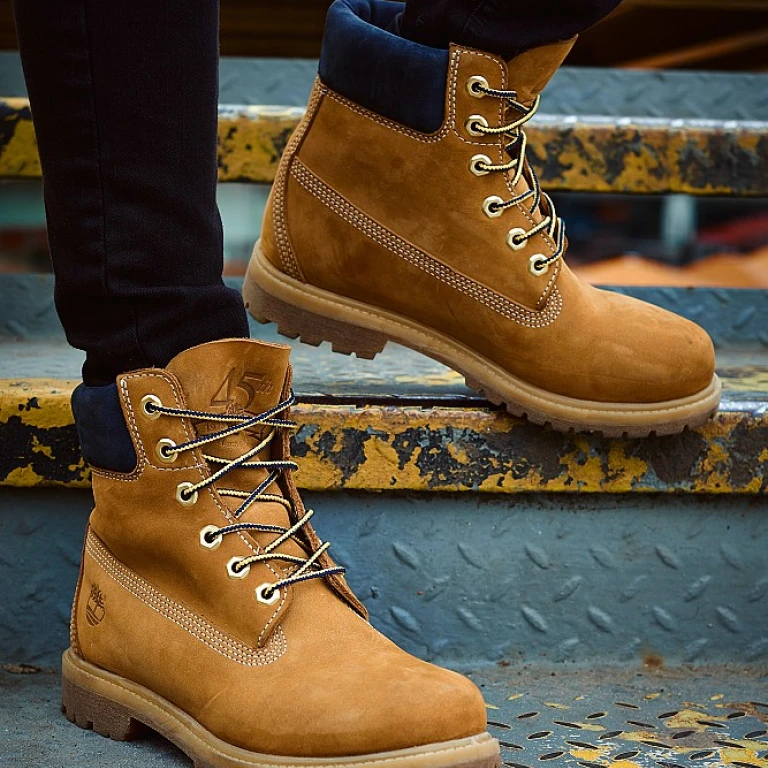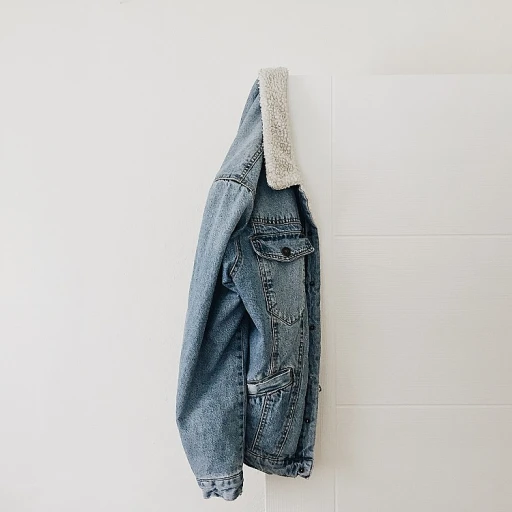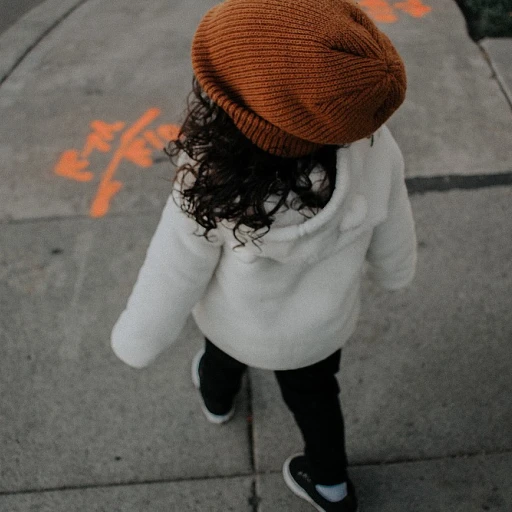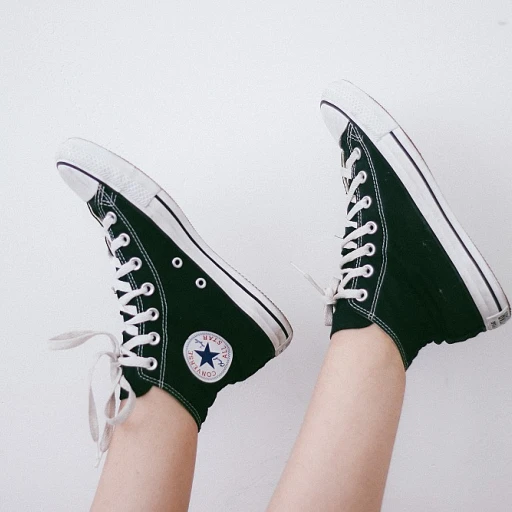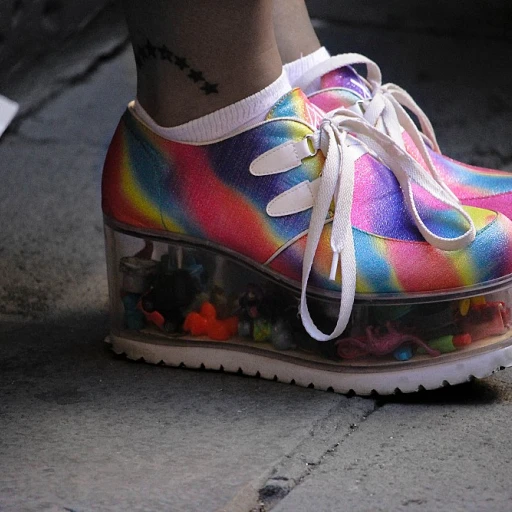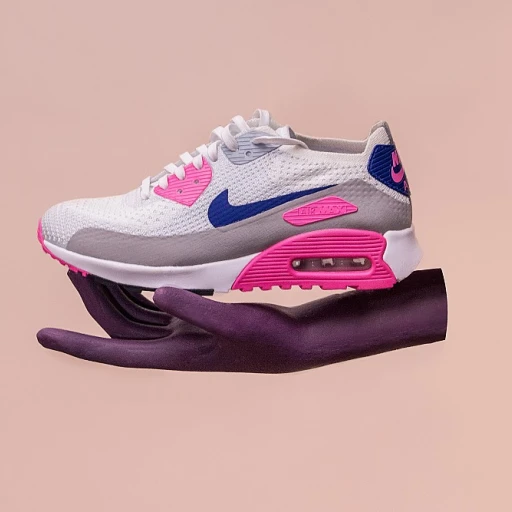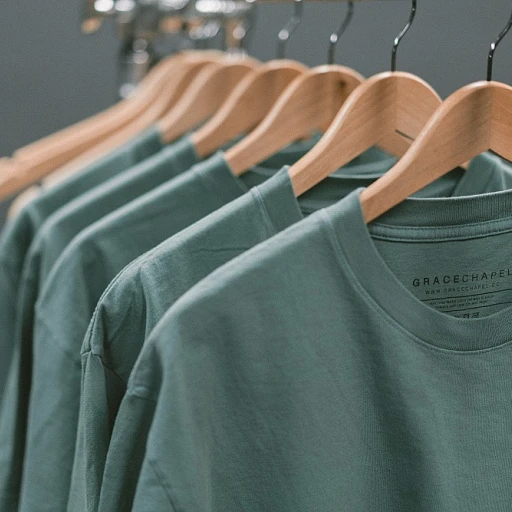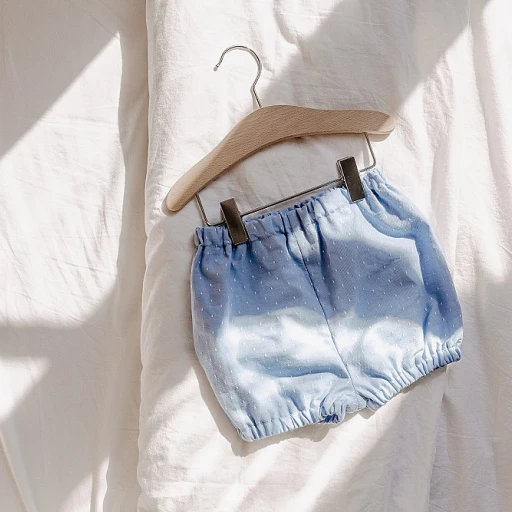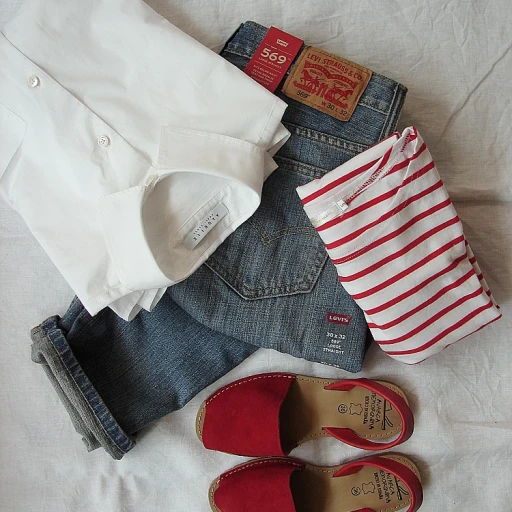
Understanding the market for baby clothes
Analyzing the baby clothes market
Understanding the market for baby clothes is essential before starting to sell. The global baby clothing market was valued at approximately $62.04 billion in 2020 and is projected to grow at a compound annual growth rate (CAGR) of 5.8% from 2021 to 2028 (Grand View Research). This growth indicates a steady demand for baby clothes among parents.
Several key players dominate the market, with brands like Gymboree, Adidas, Mini Boden, and Hanna Andersson leading the charge. In the USA, mainstream retailers such as Old Navy and Disney, along with online giants like Amazon, play significant roles. These brands are trusted by parents for their quality and stylish designs.
The trend towards online shopping is evident. Around 47% of parents prefer buying baby clothes online due to convenience and a broader selection of products (Google LLC Data). Online consignment shops have also risen in popularity, with ThredUp and Poshmark offering parents the option to sell gently used baby clothes.
Factors influencing parents' buying decisions
Parents prioritize quality and comfort when choosing baby clothes. A survey by BabyCenter revealed that 60% of parents consider softness as a top factor, while 55% look for breathable fabrics. Price is another crucial factor, with 70% of parents checking the price tags cautiously before purchasing (BabyCenter Survey).
Environmental awareness is influencing choices, too. Around 35% of parents prefer buying from brands that follow sustainable and ethical practices. For example, Tea Collection is renowned for its eco-friendly baby clothing line, making it a favorite among eco-conscious parents.
Current trends in baby clothes
Fashion trends in baby clothes often reflect what's happening in adult fashion, but with kid-friendly adjustments. For fall and winter, long sleeve jumpsuits and cozy one-pieces are trending. Bright, playful patterns and gender-neutral colors are increasingly popular. A noteworthy trend is the rise of organic and natural fibers, such as organic cotton and bamboo, which are gentle on babies' sensitive skin.
A Nielsen report highlighted that around 52% of millennial parents are willing to pay a premium for baby clothes that are sustainably made and eco-friendly. Brands like Hanna Andersson and Mini Boden have capitalized on this trend by offering eco-conscious collections.
As you embark on your journey to sell baby clothes, understanding these market dynamics and trends will help you position your products effectively.
Choosing the right platform to sell baby clothes
Picking the best online platforms
Choosing the right place to sell your baby clothes is crucial for success. There are several dependable options, both for general audiences and specialty markets. Usually, the best choice depends on the volume and type of items you're selling.
Amazon and eBay are probably the first names that pop into your head. Amazon, with its vast reach and diverse customer base, is excellent for selling kids fashion items. In 2023, Amazon reported nearly 2.5 billion visits monthly and sold over 1 billion toys and clothing items. eBay follows closely, being a highly preferred online consignment shop for sellers wishing to list products at competitive prices and offer free shipping options. As per Statista, eBay had around 187 million users in the USA alone in 2022.
If you’re more interested in a specialized marketplace, consignment stores like Once Upon A Child and ThredUp cater specifically to children’s clothing. ThredUp claims to have saved its users $3.5 billion on resale prices, showing a significant trend towards online consignment for baby clothes.
For those who appreciate fashion, niche boutiques such as Tee Collection or Hanna Andersson offer specific markets interested in quality baby items. For instance, designer baby clothes boys are much sought after on these platforms.
The rise of social media marketplaces
Don’t underestimate social media platforms like Facebook Marketplace and Instagram. Facebook Marketplace is used by 800 million people monthly and is a fantastic free marketing tool. Instagram allows you to build a brand and sell directly to followers through posts, stories, and the new Shop feature.
According to a 2022 report by Hootsuite, 1 in 2 young parents prefer buying baby clothes from Instagram shops rather than traditional online stores, making it an invaluable tool in your strategy.
Traditional eCommerce stores
If you have a steady stream of baby clothes to sell, setting up your eCommerce store using platforms like Shopify or Etsy can be an excellent long-term investment. Shopify statistics reveal that on average, stores earn $72 per customer, while Etsy, focused on handmade and vintage items, had over 90 million active buyers in 2022.
Local options
Sometimes, simple is best. Participating in local consignment sales or partnering with children’s stores in your area can streamline the process. Stores like Old Navy and Gymboree occasionally have local consignment events or might be interested in lightly-used, good-quality clothes.
Pricing strategies for selling baby clothes
Determining the value of your baby clothes
When pricing your baby clothes, it's crucial to know what makes your items stand out. Consider elements like brand, condition, and rarity. For example, a Gymboree outfit worn once versus Adidas trainers still in their box can make a huge difference in determining sale price.
Brand and condition matter
Names like Mini Boden, Hanna Andersson, and Disney hold a premium value. According to a report by TradeGecko, branded kids' items sell 50% faster and often fetch higher prices.
If your baby clothing is gently used, ensure it's clean and free of stains. An article from Wired emphasizes that well-maintained clothes can command up to 70% of their original value.
Checking competition
Research listings of similar items on platforms like Amazon and Google to establish competitive pricing. Forrester research shows sellers matching or slightly below the average market price often have higher sell-through rates.
Offering bundles
Bundles can entice buyers by offering more perceived value. Baby clothing stores often use this strategy to move inventory faster. For instance, selling a bundle of long sleeve and short sleeve outfits together can attract more buyers, especially those seeking coolest trends and styles.
Seasonal pricing adjustments
Timing your sales can significantly impact prices. Selling fall winter clothing just before the season starts often enables a higher price, whereas offloading summer clothes at a discount can clear stock efficiently.
Utilizing free shipping
Offering free shipping can be the final nudge for a buyer to click checkout. According to a Statista report, 79% of consumers consider free shipping an important factor when shopping online.
Case study: online consignment
Online consignment shops like ThredUp have revolutionized the way parents sell kids clothes. A case study by Drapers revealed that sellers using online consignment could earn 20%-25% more compared to local consignment stores, thanks to the broader customer base and streamlined selling process.
Setting the right pricing is essential for maximizing profits while still being competitive. Don't hesitate to experiment with different strategies and always monitor your sales data to refine your approach.
Marketing tips to sell baby clothes effectively
Social Media Sales Tips
Selling on social media is all the rage these days, especially for baby clothes. Platforms like Instagram and Facebook are gold mines for reaching eager parents. Did you know that according to a study by Business Insider, 72% of Instagram users reported buying fashion items when they saw them on the app? That includes baby clothes! Make sure your posts are visually appealing and use trending hashtags like #BabyFashion, #KidsClothes, and #StylishBaby. Engage with your followers by responding to comments and messages – building that relationship can make a big difference when selling kids clothes.Partnering with Influencers
Want to reach more buyers without spending too much on ads? Partner with mommy bloggers or baby fashion influencers. According to a report by Influencer Marketing Hub, businesses make $5.20 for every $1 spent on influencer marketing. Influencers can review your products and share them with their audience, which can significantly drive sales. Don't hesitate to reach out! Many micro-influencers, those with fewer than 100k followers, have highly engaged followers and might agree to promote your baby clothes for free items or a small fee.Utilizing Online Marketplaces
Besides your local shop, online marketplaces like Amazon and eBay are effective for selling baby clothes. Amazon, for instance, has a huge customer base, and according to Statista, over 29% of US internet users made a purchase on Amazon in a three-month span. Make sure your product listings are optimized with high-quality photos, detailed descriptions, and accurate sizes. Check out this guide to finding the best outfits for your little one for more tips.Offering Discounts and Free Shipping
Parents love a good deal. Offering discounts or free shipping can attract more buyers. According to a National Retail Federation study, 75% of shoppers expect free shipping even on orders under $50. You can have special sale events, like a Back-to-School sale or a Winter Clearance sale, to move inventory faster. Just remember to promote these deals on all your platforms to maximize reach.Creating a Loyal Customer Base
Building loyalty isn’t just about making a sale – it's about the relationship. Offer excellent customer service and consider implementing a loyalty program where repeat buyers get discounts or special offers. Parents will appreciate it and are more likely to come back when they need the next size up. Engage with your customers by sending thank-you notes or asking for feedback. A happy customer base means good word-of-mouth, and nothing sells baby clothes better than other parents’ recommendations.Sustainable and ethical selling practices
Embrace eco-friendly materials and practices
Going green isn’t just a trend; it’s a necessity, especially when selling baby clothes. Parents today are increasingly concerned about the environmental impact of their purchases. According to a study by the Environmental Protection Agency, textile waste accounts for 5.8% of the total municipal solid waste in the USA. By opting for sustainable fabrics like organic cotton or bamboo, you can cater to these eco-conscious parents.
Brands like Adidas and Mini Boden are pioneers in this domain, consistently providing high-quality, sustainable options. Retailers embracing sustainability often see higher customer loyalty, making it not just an ethical choice, but a smart business move too.
Offer gently used options
Second-hand selling is becoming more popular, with the rise of online consignment shops like ThredUp and Kidizen. According to ThredUp’s 2022 Resale Report, the second-hand market is expected to grow 127% by 2026 in the USA. Gently used baby clothes offer an affordable, sustainable alternative. Parents love finding quality brands at a fraction of the price, and it’s a great way to appeal to cost-conscious consumers. Consignment selling can also support community building, making parents feel good about their purchases and connecting them to like-minded individuals.
Highlight fair trade certifications
Certifications like Fair Trade Certified or Global Organic Textile Standard (GOTS) give buyers peace of mind. They ensure that the workers involved in making the clothing are treated fairly. According to Fairtrade International, 84% of people recognize the Fair Trade Mark and see it as a reliable label. If you offer certified products, make sure to highlight this in your listings. This can significantly boost your credibility and attract more buyers looking for ethically made items.
Reduce packaging waste
Another simple step towards sustainability is minimizing packaging waste. Use recyclable or biodegradable materials whenever possible. A report by the University of Southern Indiana states that packaging accounts for more than 65% of household waste. Offering options like free shipping in reusable packaging can also be a strong selling point for your baby clothing store.
Engage with your customers
Being transparent and engaging with your customers about your sustainable practices can drive loyalty and trust. Share your sustainability journey on social media, blogs, or your store website. Personal stories resonate with buyers and can make a significant difference in their shopping decisions.
Legal considerations when selling baby clothes
Navigating legal requirements
Before you jump into the exciting world of baby clothes selling, you need to make sure you're on solid legal ground. Knowing and understanding local, state, and federal regulations helps you avoid potential legal headaches down the road.
Registering your business
First things first, you may need to register your business. In the USA, you can register with your local county clerk's office or state government website which will assign you a business registration number. Keep in mind, registering a business name can differ depending on your state's laws—always check for specifics.
Understanding sales tax
Sales tax is another crucial component. Each state has different regulations on the tax rate for selling baby clothes. You'll need to register for a sales tax permit in some states; this allows you to collect tax from your customers legally. Resources like your local Department of Revenue can help you navigate these requirements. According to the U.S. Small Business Administration, approximately 45% of small businesses spend over 40 hours annually on tax compliance.
Product safety and labeling
The law also requires that baby clothes adhere to certain safety and labeling standards. In the USA, the Consumer Product Safety Commission (CPSC) governs these regulations. Baby clothes must comply with standards for flammability, and you also need to label correctly reflecting the country of origin, care instructions, and size (useful links can be found on fashion-kids-magazine.com).
Privacy policy and terms of service
If you're selling baby clothes online, crafting a plain and transparent Privacy Policy and Terms of Service is vital. It should outline how you'll handle customer information. Websites like Google LLC offer free templates, but customized ones usually ensure complete coverage.
Dealing with copyright and trademark issues
When dealing with branded items like Disney or Gymboree, you can't just slap logos or characters onto any item. Unauthorized use can lead to infringement issues. According to the International Trademark Association, legal actions related to trademark infringement frequently result in settlements reaching tens of thousands of dollars.
Selling second-hand and consignment
For those interested in consignment or selling gently-used kids' clothing, the laws can also be slightly different. Items must not only comply with safety standards but also face higher scrutiny for quality. Numerous online consignment shops make this process free for sellers but may take a percentage of your sale price.
Understanding these legal aspects ensures that your baby clothing store starts on the right foot. Following the rules thoroughly not only protects you but also fosters trust with your customers.
Handling shipping and logistics
Shipping tips and best practices
When you're selling baby clothes, ensuring that your packages reach your customers in a timely and safe manner is crucial. According to a 2022 report by the United States Postal Service (USPS), proper packaging and labeling can significantly reduce shipping delays and damage, which directly impacts customer satisfaction.
Tips for effective shipping:
- Use sturdy boxes or padded envelopes to protect baby clothes; tough packaging can prevent tears and rips during transit.
- Consider eco-friendly packaging options; sustainable materials not only protect the environment but also appeal to conscientious buyers.
- Always print clear shipping labels; smudged or poorly printed labels can lead to misplaced packages.
Free shipping options are a major selling point. A 2023 study by the National Retail Federation found that 75% of online shoppers prioritize free shipping when making a purchase. Offering free shipping for qualifying orders can boost your sales and help build customer loyalty.
Tracking and insurance
Tracking provides peace of mind to both you and your customers. Most shipping carriers, including USPS, FedEx, and UPS, offer tracking services. Utilize these to keep your buyers informed about their package's journey. In cases of high-value orders, it's wise to consider adding insurance to your shipments.
A survey by Shorr Packaging Corp in 2021 revealed that 80% of consumers expect to track their orders, and 69% are more likely to purchase again if they had a positive tracking experience. Offering reliable tracking updates can drastically improve customer satisfaction.
Handling international shipments
If you're selling baby clothes to an international audience, understanding customs regulations is imperative. Each country has its own rules and tariffs, and neglecting these can result in delays and additional costs. The International Trade Administration offers resources to help you navigate international shipping requirements.
Mini Boden, a well-known kids' clothing brand, offers insights on handling international shipments effectively. They recommend always providing detailed descriptions and correct HS codes on customs forms to minimize the risk of your packages being held up at borders.
Dealing with returns
Even with the best quality products, returns are inevitable. Ensure you have a clear and comprehensive return policy. Many successful sellers, like those on Amazon's marketplace, include pre-paid return labels in their packages to facilitate easy returns for customers. This level of customer service can improve trust and encourage repeat business.
Hanna Andersson, a popular children's clothing brand, found that 65% of customers who had an easy return experience were more likely to make future purchases. Don't hesitate to invest in a straightforward returns process; it pays off in building a loyal customer base.
Customer service and building a loyal customer base
Importance of creating a positive customer experience
The journey of selling baby clothes doesn't end when a customer makes a purchase. In fact, the post-purchase experience can be just as crucial as the moment they hit that 'buy' button. Imagine you've just bought adorable clothes online for your baby, and they arrive as described, on time, maybe even with a small thank you note – wouldn't you feel pleased? That's the kind of experience you want to give your customers.
Responding to customer inquiries promptly
Responding quickly to inquiries is non-negotiable. According to Statista, 79% of consumers expect a response within 24 hours. Long response times can lead to frustration, and negative reviews can harm your reputation. If using e-commerce platforms like Amazon, note that they typically prioritize sellers who maintain prompt communication.
Handling claims and returns efficiently
Customers value hassle-free returns and claims handling. According to a report by Business Insider, 67% of customers check the return policy before making a purchase. Clear return policies can save both parties headaches. Be transparent about what is returnable, the condition items must be in, and who covers shipping costs. Offering free returns can be a sweet deal that encourages more sales.
Building loyalty through personalized touches
Personalized touches can go a long way. Simple gestures like a handwritten thank you note or a small freebie can delight your buyers. Nicole Taylor, an expert in customer experience at Harvard Business Review, notes that such gestures create emotional connections, which can turn one-time buyers into repeat customers. You might also offer loyalty discounts or early access to new collections, ensuring customers feel valued.
Effective use of customer feedback
Use customer feedback to improve your offerings. Actively ask for reviews and use positive comments to build your brand’s trustworthiness. Constructive criticism, when addressed, can drastically improve the customer experience. For example, if multiple buyers point out that sizes run small, make an effort to adjust your size chart and communicate it.
Maintaining transparency and trust
Customers appreciate honesty. If there are delays in shipping or issues with an order, informing the customer promptly prevents misunderstandings and builds trust. As per a study by Label Insight, 94% of consumers are likely to be loyal to a brand that offers complete transparency.
Creating a community around your store
Engage with your customers through social media and newsletters. Creating a sense of community where parents can share their experiences and get tips can foster loyalty. For instance, Gymboree is known for its involved community where parents share how they dress their kids in Gymboree clothes, creating a positive feedback loop.

